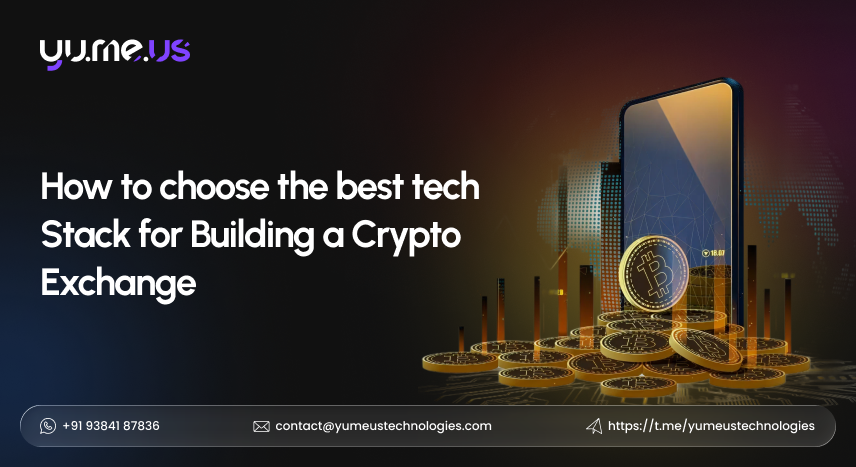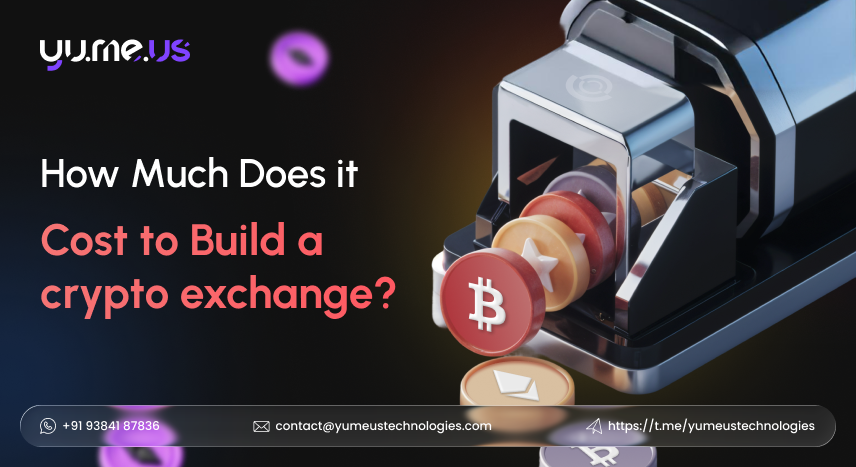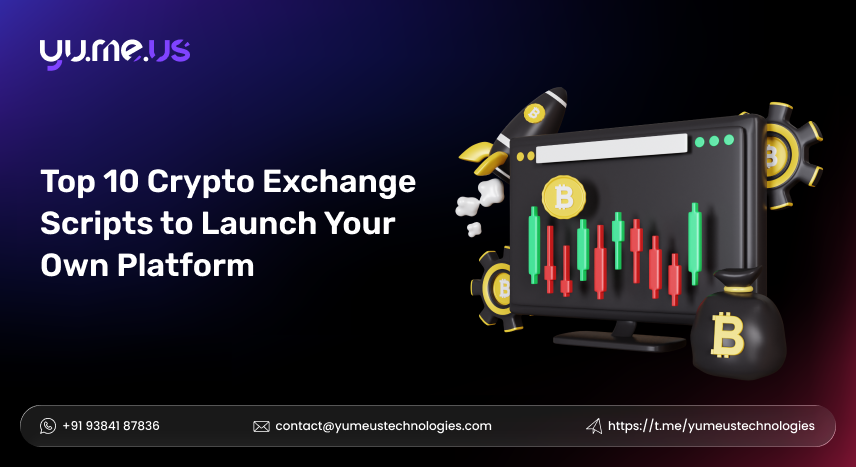How to Choose the Best Tech Stack for Building a Crypto Exchange

How to Choose the Best Tech Stack for Building a Crypto Exchange
Every second, millions of crypto trades happen, but have you ever thought about what happens behind the scenes? That's a tech stack, the heart of your exchange. Because it decides speed, security, and growth potential. The crypto market is expected to reach US$264.32 billion by 2030, with a lot of competitors already in the market. To get ahead of them, choosing the best tech stack is an important step a business owner can take. Let's get into this tech stuff.
Deciding the Exchange Model
The first step in selecting a tech stack is fixing the type of exchange you plan to develop. Your choice here will influence programming languages, frameworks, and database systems throughout the platform.
Centralized Exchange (CEX)
Operated by a central authority, offering high liquidity and user-friendly interfaces.
Decentralized Exchange (DEX)
Gives consumers control over their money by using blockchain technology.
Hybrid Exchange
Combines features of both CEX and DEX, and offers the best of both types
Frontend - The First Point of Interaction
Yes, frontend (user experience) decides and holds a top priority in traders' retention. An inefficient frontend can easily take away user confidence, no matter how powerful the backend is. Users always want real-time data, user-friendly dashboards, and easy order placements. Modern frontend frameworks provide these across devices, such as
- React.js: Offers a component-based architecture and a dynamic and responsive UI.
- Vue.js: Suitable for creating interactive interfaces, it is compact and adaptable.
- Angular: A comprehensive framework providing tools for building scalable applications.
Backend - The Engine Behind Everything
The backend is responsible for executing trades, managing wallets, processing deposits, and maintaining order books. A modular backend lets trading engines and user authentication scale independently with flawless operation during high-traffic periods and high volumes of transactions. Some well-known tech companies are,
- Node.js: Known for its non-blocking I/O and suitable for handling numerous concurrent connections.
- Spring Boot (Java): Offers a comprehensive ecosystem for easy maintainability.
- Go (Golang): Provides high concurrency support and is known for its performance and productivity.
Trade Engine Optimization
In any trading platform, its engine's speed directly affects user satisfaction. Advanced matching algorithms must pair buy and sell orders in real time, facilitating accuracy. High-frequency trading and sudden market volatility (common in the crypto market) can make engine performance weak, and any lag can lead to financial losses. So choose wisely.
Database Management
Cryptocurrency exchanges process big volumes of data. Databases must support both performance and integrity. It stores sensitive information like user data, transaction histories, and order books. If you want your platform to be fast and resilient under load, choose the right combination among these,
- PostgreSQL: An open-source relational database known for its durability and support for complex queries.
- MySQL: Widely used, offering reliability and ease of use.
- Redis: An in-memory data structure store, best for caching and real-time data processing.
Blockchain Technology Integration
Here comes the main part, Blockchain Integration. It changes depending on the exchange model. Centralized exchanges typically connect to multiple blockchain networks through APIs to support various cryptocurrencies. Meanwhile, DEX depends heavily on smart contracts. Select an appropriate blockchain network from these popular ones.
- Ethereum: Decentralized apps (dApps) and smart contracts are supported by this decentralized platform.
- Binance Smart Chain (BSC): Offers low transaction fees and high throughput.
- Solana: Known for its high-speed transactions and scalability.
Smart Contracts Selection
Smart contracts automate various processes within the exchange, such as trade settlement, liquidity management, and token swap, by reducing the need for intermediaries. Languages like Solidity for Ethereum, Vyper, and Rust for Solana provide secure deployment. The following languages are the ones behind those smart contracts.
- Solidity: The main language used to create Ethereum smart contracts.
- Vyper: A Python-based language offering simplicity and security.
- Rust: Used for writing smart contracts on blockchains like Solana.
Security Measures and Compliance
Security is non-negotiable in the crypto industry. The recent high-profile hacks (such as Bybit, WazirX) show the importance of powerful safety measures. Implementing two-factor authentication (2FA), multi-signature wallets, encrypted data storage, and cold storage for large reserves protects assets. As governments are working on regulating the industry, compliance with KYC (Know Your Customer) and AML (Anti-Money Laundering) regulations establishes legal adherence and builds user confidence.
Cloud Infrastructure
Cloud services provide the necessary infrastructure to support the active needs of a crypto exchange. Platforms like AWS, Google Cloud, and Microsoft Azure offer modular computing, storage, and automated deployment. They are the one who lets exchanges handle sudden traffic spikes, maintain high uptime, and deploy updates. Cloud-native architectures, paired with microservices, provide advanced updating of components like trading engines, wallet services, and authentication modules.
White-Label vs. Custom Development
Nowadays, most entrepreneurs prefer white-label crypto exchange solutions due to their rapid deployment nature and customization capabilities. But custom-built stacks allow complete control over the platform's functionality, optimization, and branding. As the competition in the crypto industry in its peak, investing in a custom tech stack can result in top performance, improved security, and better user experiences that make your exchange unique in this crowded market.
Ongoing Monitoring and Maintenance
You made the decision, selected a trusted crypto exchange development company, picked up the best tech stack to build your platform, and launched it into the market. But that's just the beginning. As the crypto market runs daily without intervals, you should also monitor continuously through real-time analytics, track trading volumes, wallet activity, and system performance.
Regular audits, bug fixes, and feedback loops confirm the platform remains secure, productive, and perfectly aligned with user expectations. A tech stack is never static; it keeps expanding alongside market and cybersecurity developments.
Final Words
Frontend and backend technologies, blockchain integration, cloud infrastructure, security measures, and compliance requirements - with all these, the best tech stack developers can build a secure and feature-rich crypto exchange platform. As Matt Mullenweg said, 'Technology is best when it brings people together.' In the crypto industry, when all these technologies are combined, the platform can be the future of digital finance.
















